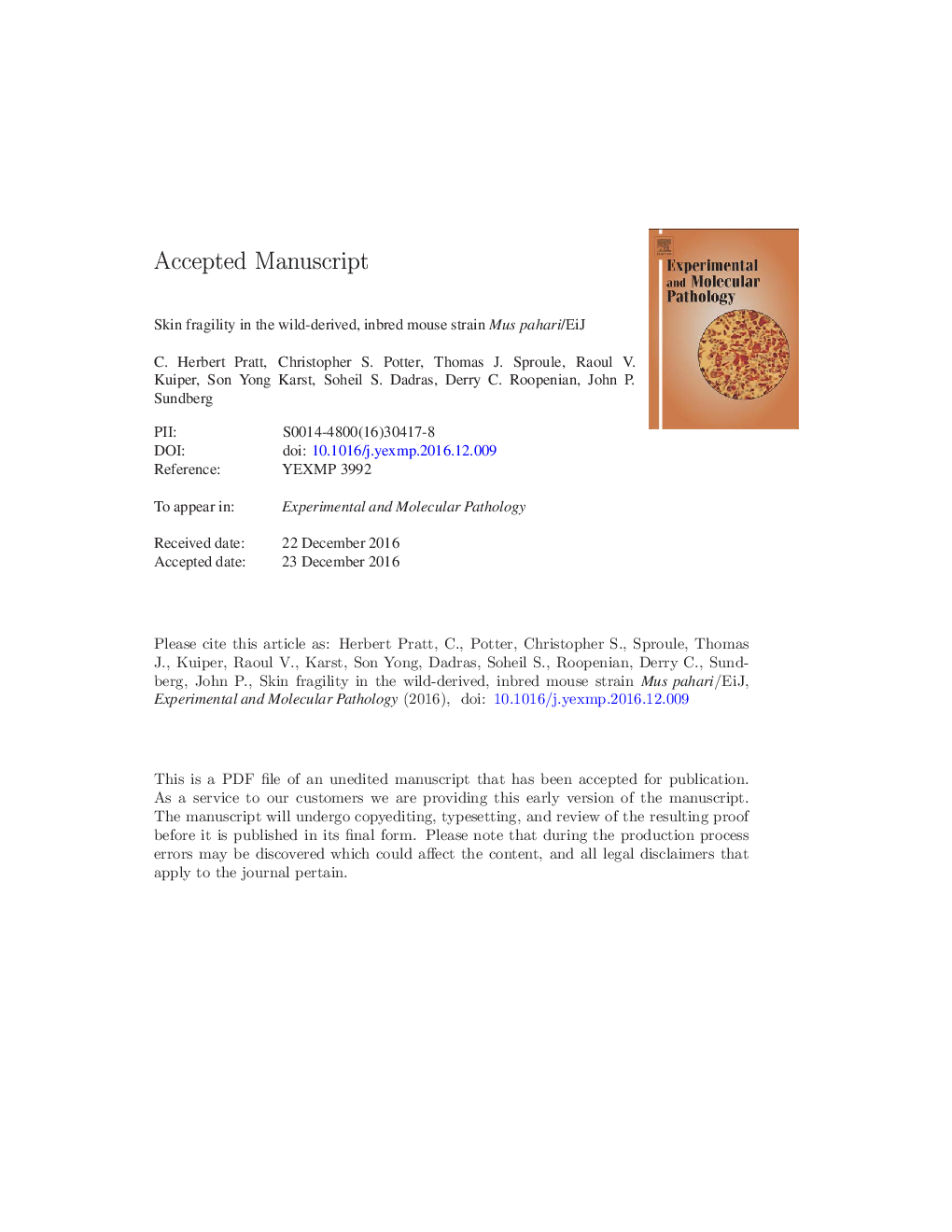| Article ID | Journal | Published Year | Pages | File Type |
|---|---|---|---|---|
| 5584415 | Experimental and Molecular Pathology | 2017 | 15 Pages |
Abstract
Mus pahari is a wild-derived, inbred mouse strain. M. pahari colony managers observed fragility of this strain's skin resulting in separation of tail skin from the mouse if handled incorrectly. Tail skin tension testing of M. pahari resulted in significantly lowered force threshold for caudal skin rupture and loss in comparison to closely related inbred mouse species and subspecies and even more than a model for junctional epidermolysis bullosa. Histologically, the tail skin separated at the subdermal level with the dermis firmly attached to the epidermis, excluding the epidermolysis bullosa complex of diseases. The dermal collagen bundles were abnormally thickened and branched. Elastin fiber deposition was focally altered in the dermis adjacent to the hair follicle. Collagens present in the skin could not be differentiated between the species in protein gels following digestion with pepsin. Together these data suggest that M. pahari have altered extracellular matrix development resulting in separation of the skin below the level of the dermis with moderate force similar to the African spiny mouse (Acomys spp.).
Keywords
Related Topics
Life Sciences
Biochemistry, Genetics and Molecular Biology
Clinical Biochemistry
Authors
C. Herbert Pratt, Christopher S. Potter, Raoul V. Kuiper, Son Yong Karst, Soheil S. Dadras, Derry C. Roopenian, John P. Sundberg,
